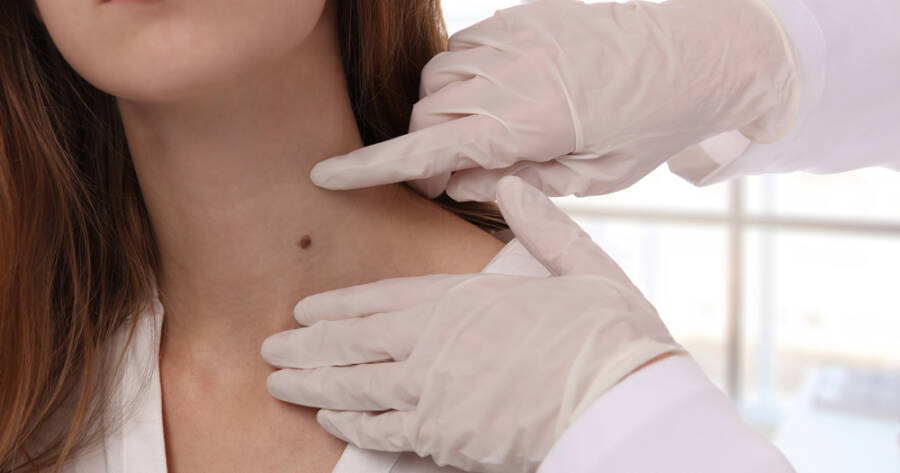Moles are common growths on the skin that can vary in size, shape, and color. While most moles are harmless and don’t require medical attention, some individuals choose to have them removed for cosmetic reasons or because they may be suspicious or potentially cancerous. Mole removal is a routine procedure performed by dermatologists and other medical professionals. Explore the different methods of mole removal, the reasons for removing a mole, and what you should know before undergoing the procedure.
Why Consider Mole Removal?
There are several reasons why someone might choose to have a mole removed. These include:
- Cosmetic Concerns: Many people opt for mole removal for aesthetic reasons. Moles on visible areas of the body, like the face, neck, or arms, can sometimes be bothersome if they are large, raised, or have an unusual appearance.
- Suspicious Moles: If a mole changes in appearance, size, or color, it could be a sign of a skin condition like melanoma, the deadliest form of skin cancer. Dermatologists recommend removing suspicious moles to test them for cancerous cells. Early detection and removal of cancerous moles can significantly increase the chances of successful treatment.
- Physical Discomfort: Some moles can become irritated by clothing or jewelry, causing discomfort or pain. In such cases, removal may be necessary to prevent further irritation or injury.
- Medical Reasons: If a mole is found to be precancerous or exhibits abnormal growth, a doctor may recommend removal as part of a broader treatment plan to prevent potential health complications.
Methods of Mole Removal
There are several techniques used for mole removal, depending on factors such as the size, location, and type of mole. A healthcare provider will determine the most suitable method for each individual case. Common methods of mole removal include:
- Excisional Surgery: This is the most common method for removing moles, especially when they are large or deep. During excisional surgery, the mole is cut out, and the surrounding skin is stitched together. The removed mole is often sent to a lab for biopsy to check for cancerous cells. This method leaves a scar, which may fade over time.
- Shave Removal: For smaller moles that are raised above the skin surface, shave removal is often used. The mole is shaved off with a scalpel, and the area is cauterized to prevent bleeding. Shave removal typically leaves a flat scar that can be less noticeable than the scar from excisional surgery. However, this technique is not suitable for moles that are deeper in the skin.
- Laser Removal: Laser treatment is often used for removing moles that are small, non-cancerous, and on areas with delicate skin, such as the face. Laser removal involves using intense light to break down the pigment in the mole, causing it to fade and disappear over time. This method is non-invasive, but it’s not suitable for deep moles, as it only targets surface-level tissue.
- Cryotherapy: Cryotherapy involves freezing the mole with liquid nitrogen, which causes the tissue to die and the mole to fall off over time. This method is typically used for non-cancerous moles and may not be as effective for larger or deeper moles.
What to Expect During the Procedure
Mole removal is typically a quick and straightforward procedure. Most mole removals are performed in a doctor’s office or clinic, and the process usually lasts between 15 to 30 minutes, depending on the size and location of the mole.
- Anesthesia: Before the procedure, the area around the mole will be numbed with a local anesthetic to minimize pain and discomfort. You will be awake during the procedure, but you should not feel any pain.
- Aftercare: After the mole is removed, your doctor will provide you with instructions on how to care for the wound to prevent infection and promote healing. You may need to keep the area clean and covered with a bandage for several days, and you should avoid picking at the scab or exposing the area to direct sunlight.
- Healing Time: The healing process varies depending on the removal method. For excisional surgery, it may take a few weeks for the wound to fully heal. Shave removal and laser treatments generally have a quicker recovery time. You may experience some mild swelling, redness, or scabbing, but these symptoms should subside within a few days to a week.
Risks and Considerations
While mole removal is generally safe, there are some potential risks and side effects to be aware of, including:
- Scarring: Most mole removal methods will leave a scar, although the size and visibility of the scar depend on the technique used and the location of the mole. Scarring is usually minimal and fades over time, but it can vary from person to person.
- Infection: As with any procedure that breaks the skin, there is a small risk of infection. Following your doctor’s aftercare instructions carefully will reduce this risk.
- Regrowth: In some cases, moles can regrow after being removed. This is particularly true for shave removal, where the mole may not be fully excised.
Safe and Effective Mole Removal for Health and Aesthetic Benefits
Mole removal is a common and effective way to address cosmetic concerns, discomfort, or potentially dangerous moles. With modern techniques, the procedure is typically safe, quick, and results in minimal downtime. However, it’s important to consult with a healthcare professional, particularly if you have a mole that seems suspicious or has changed in appearance, to ensure the best treatment option. Whether you’re removing a mole for aesthetic reasons or for health concerns, mole removal can help restore your confidence and peace of mind while ensuring the health of your skin.
